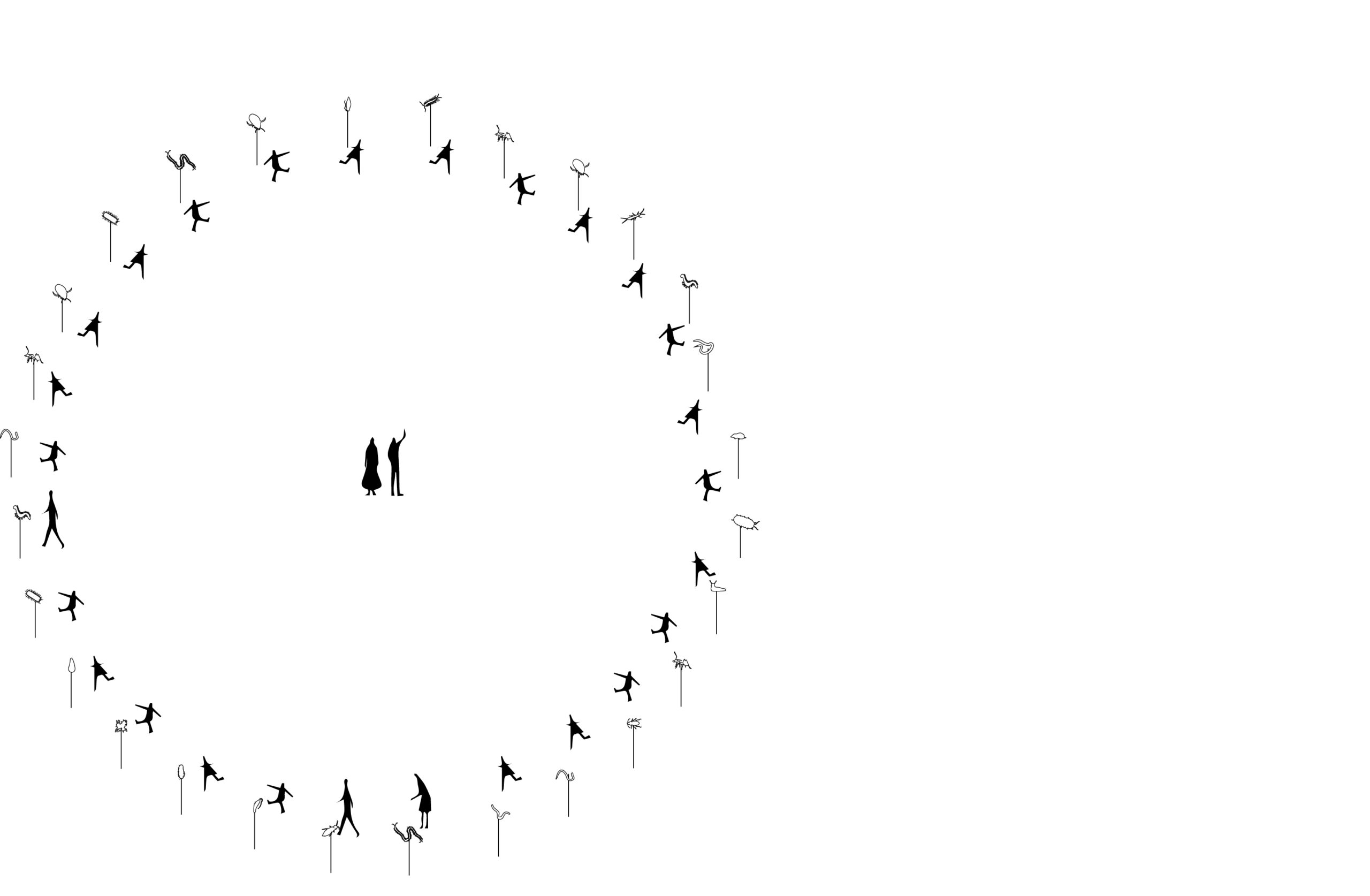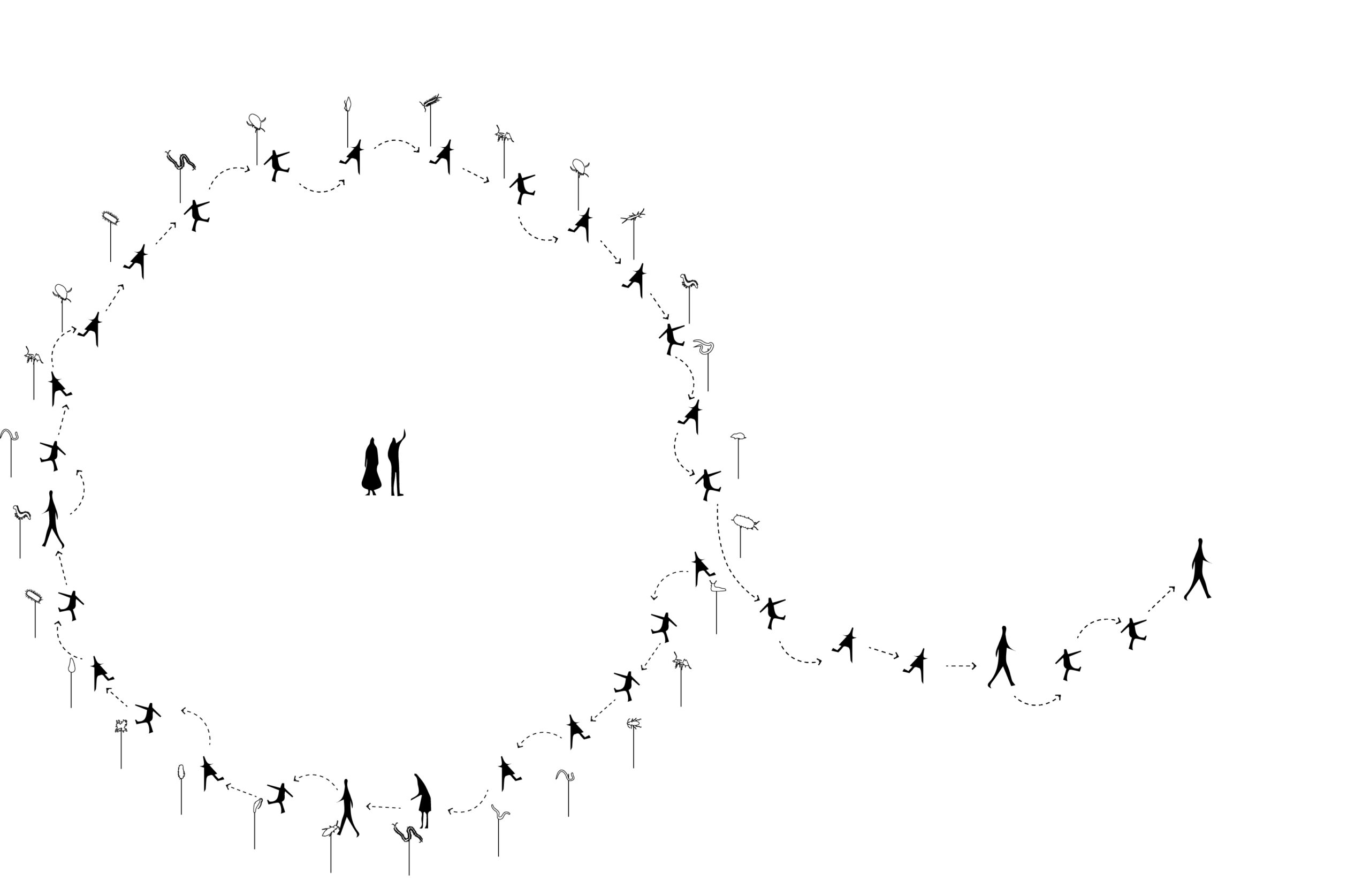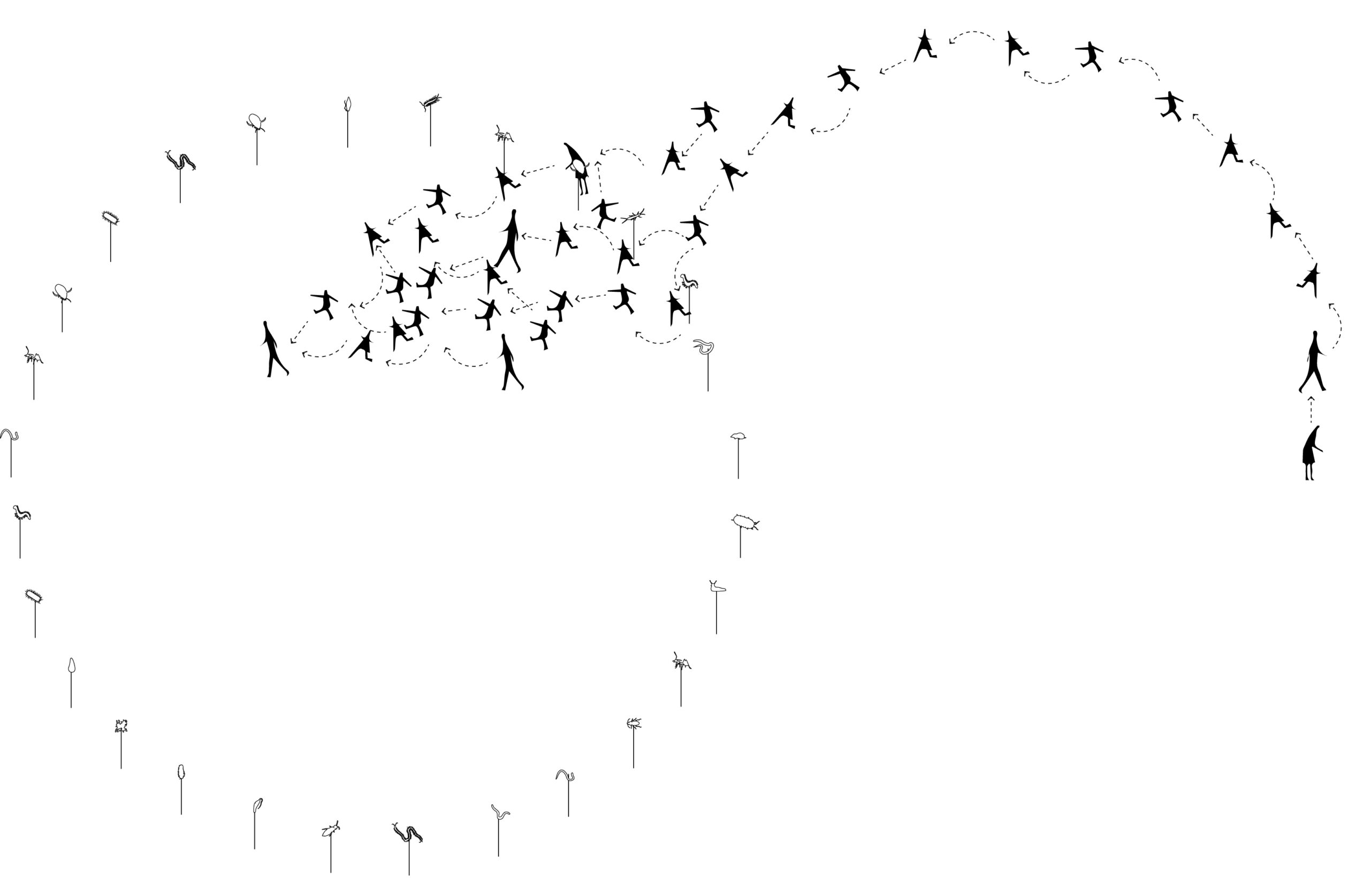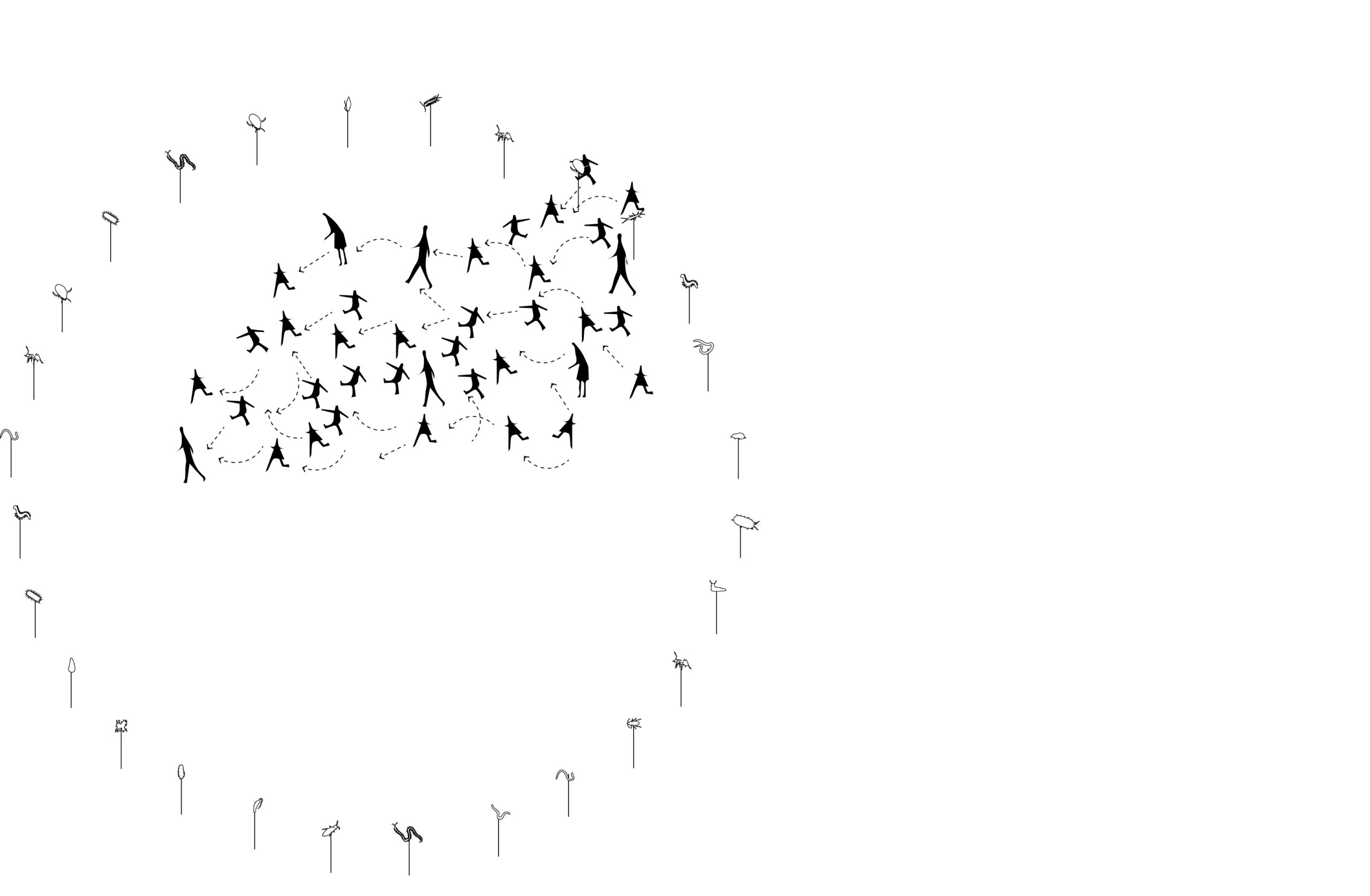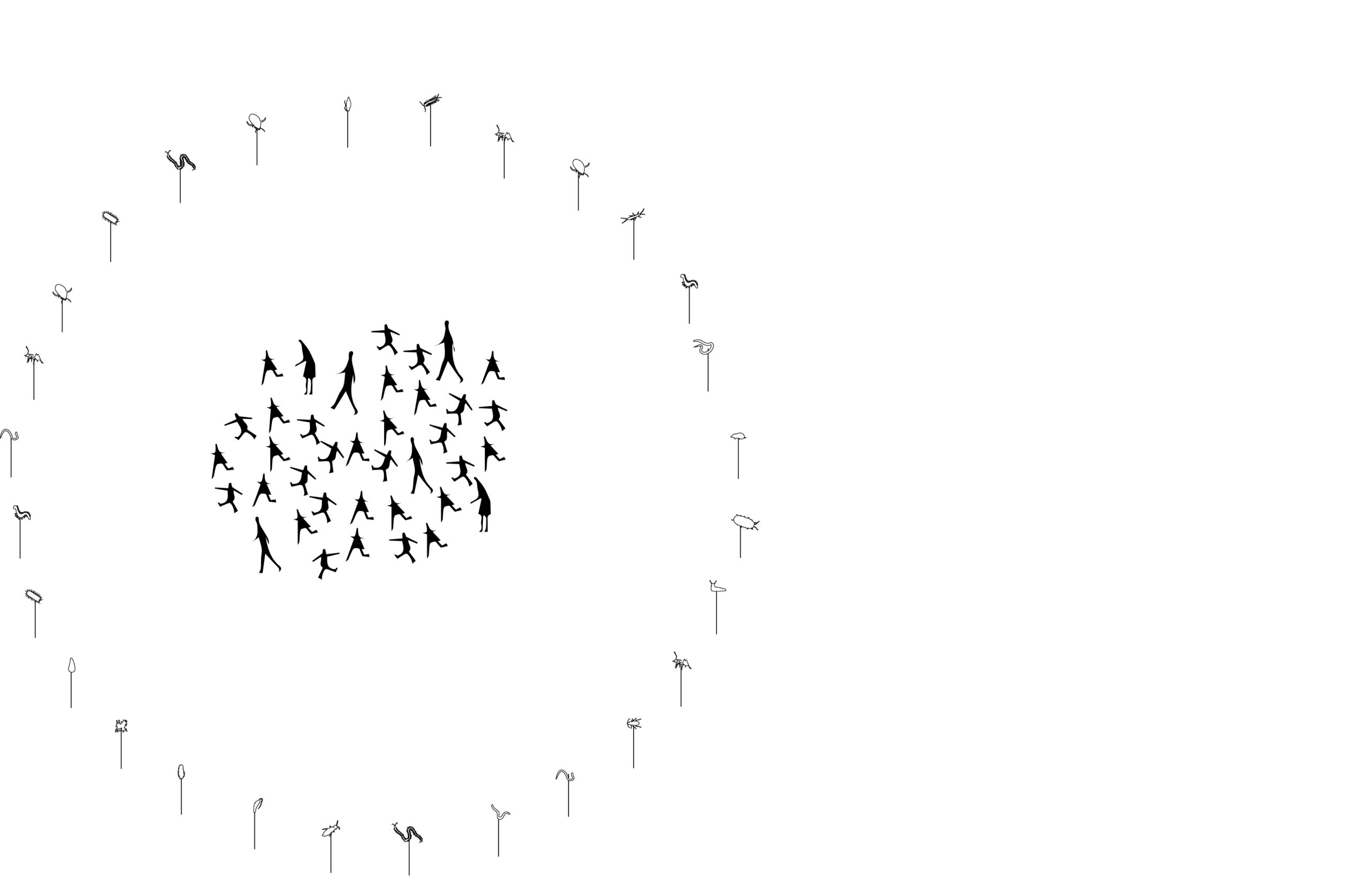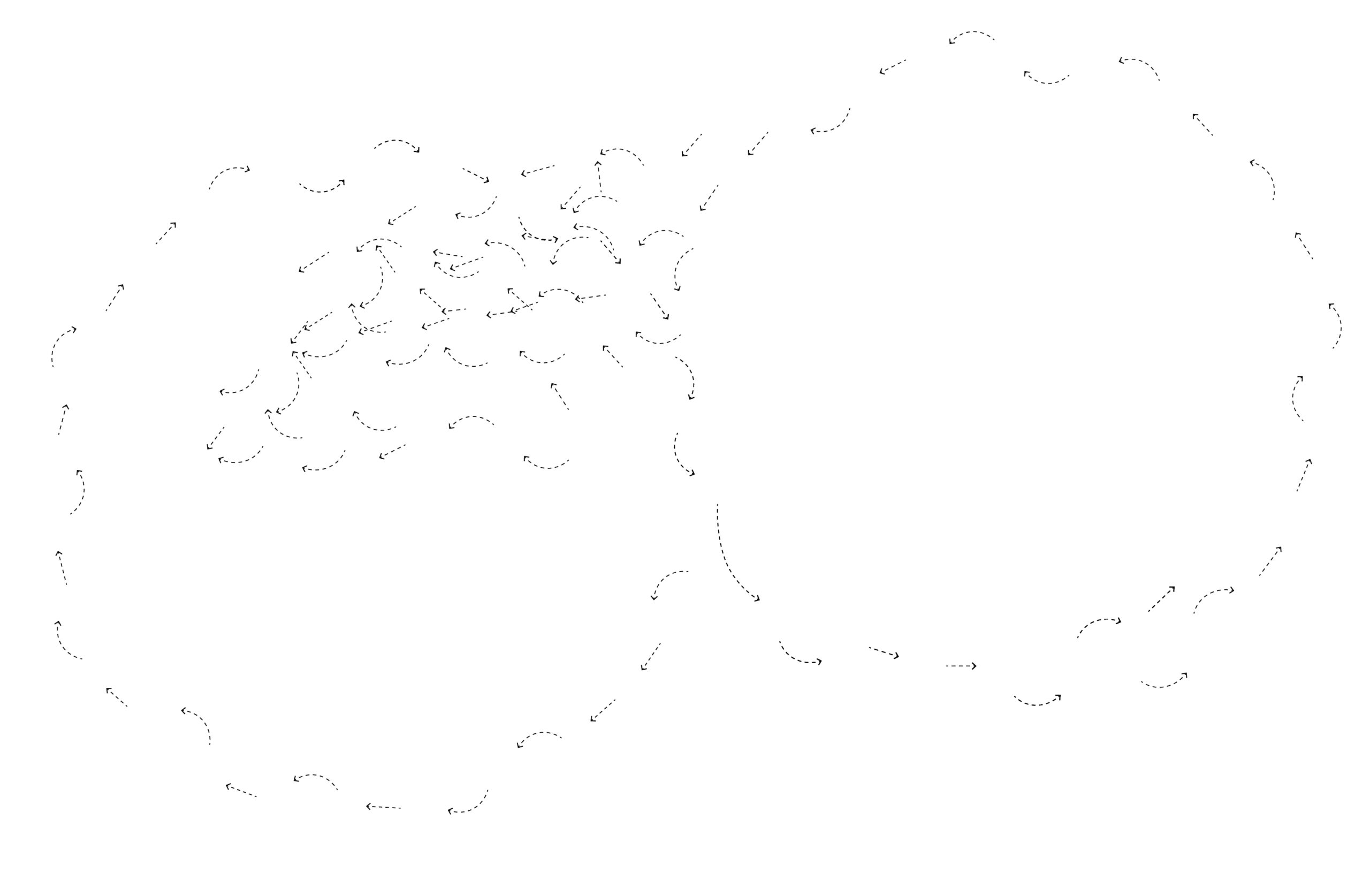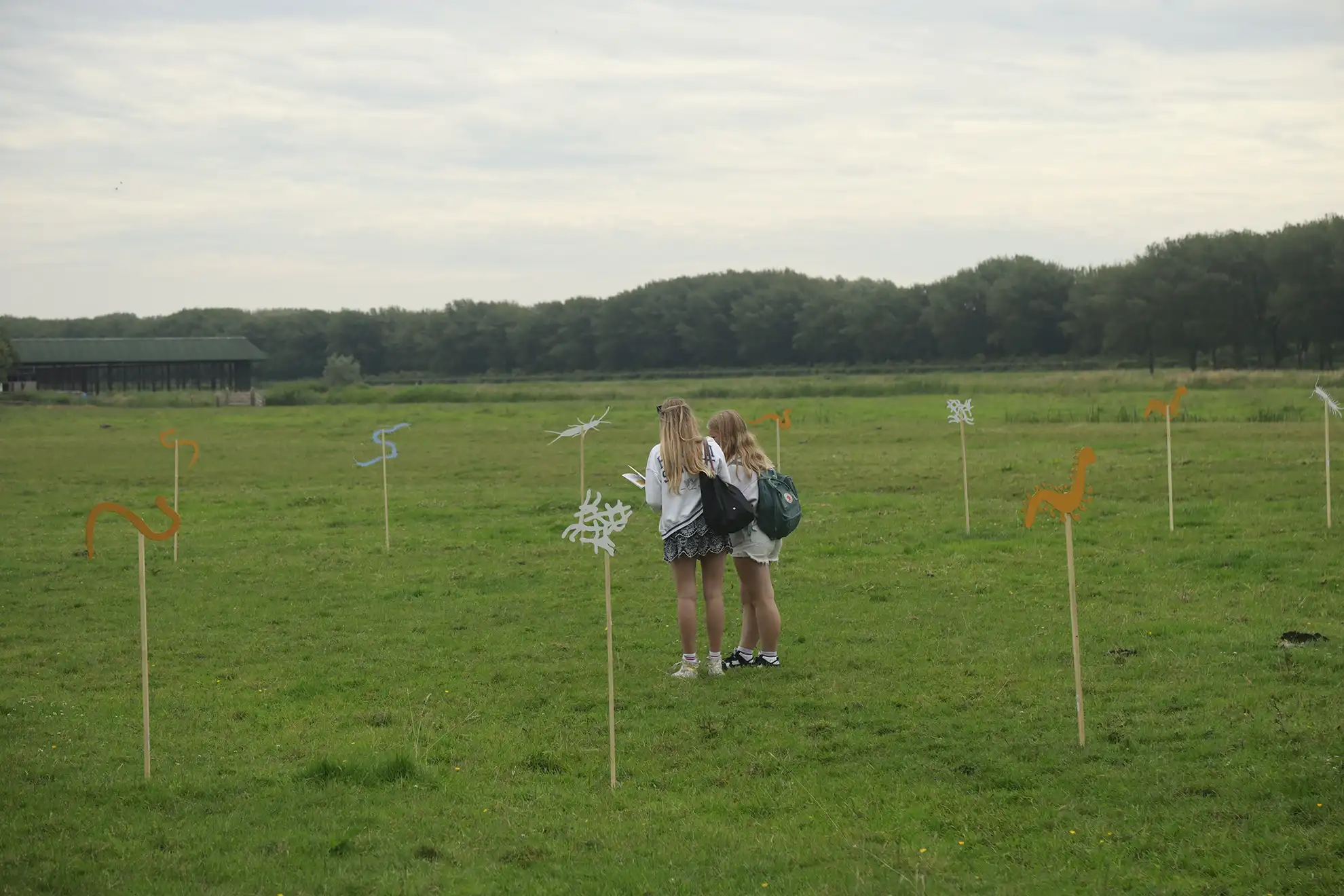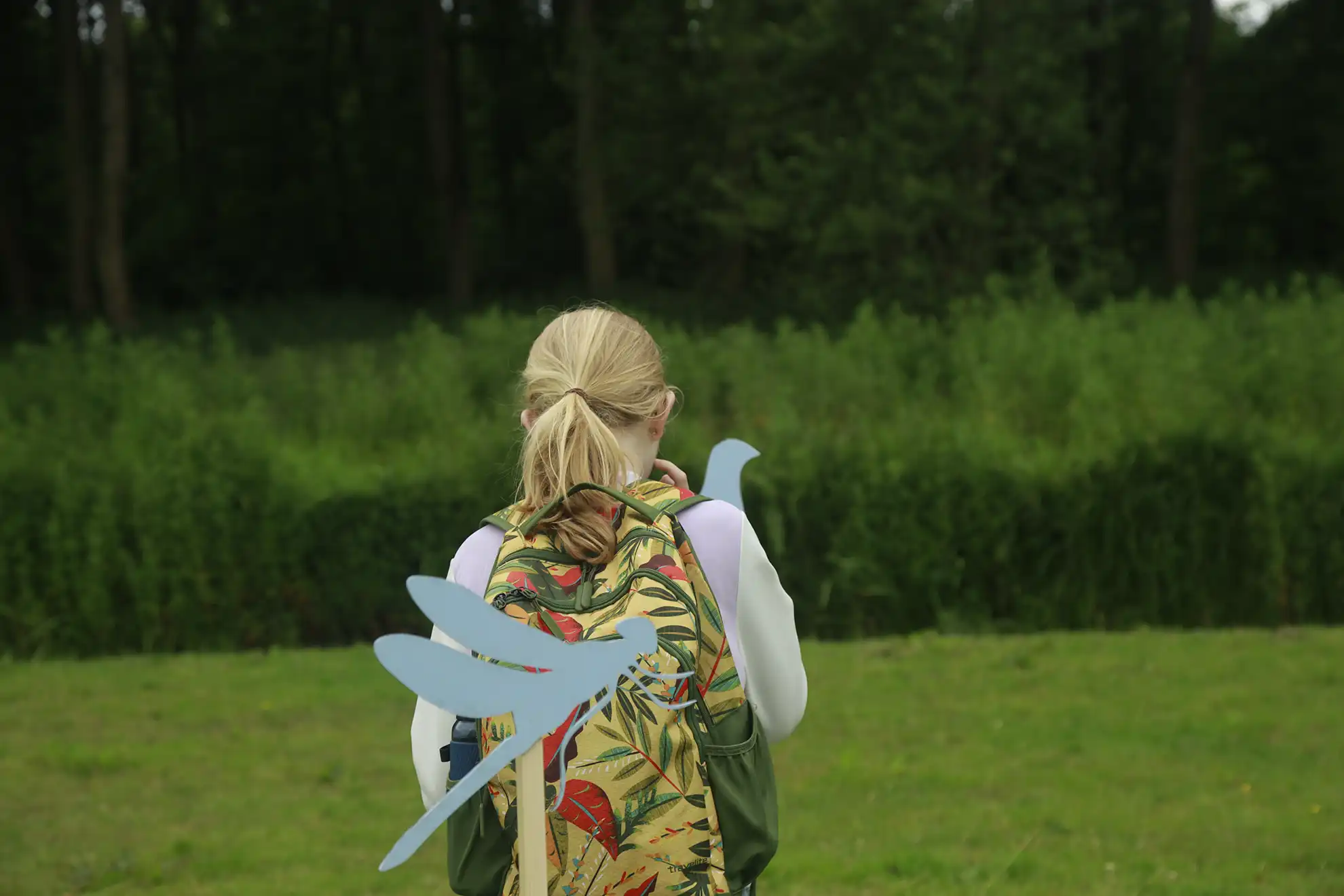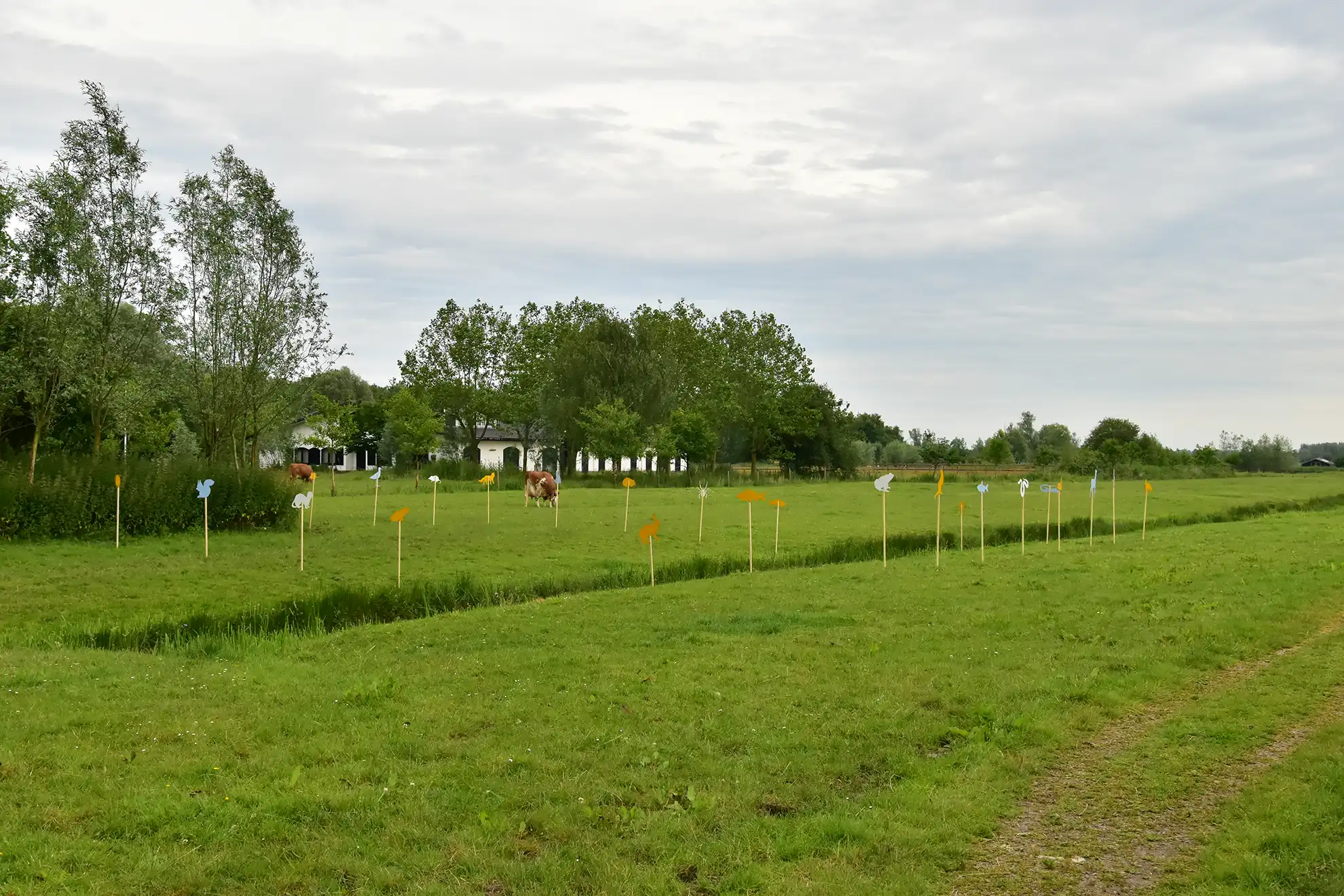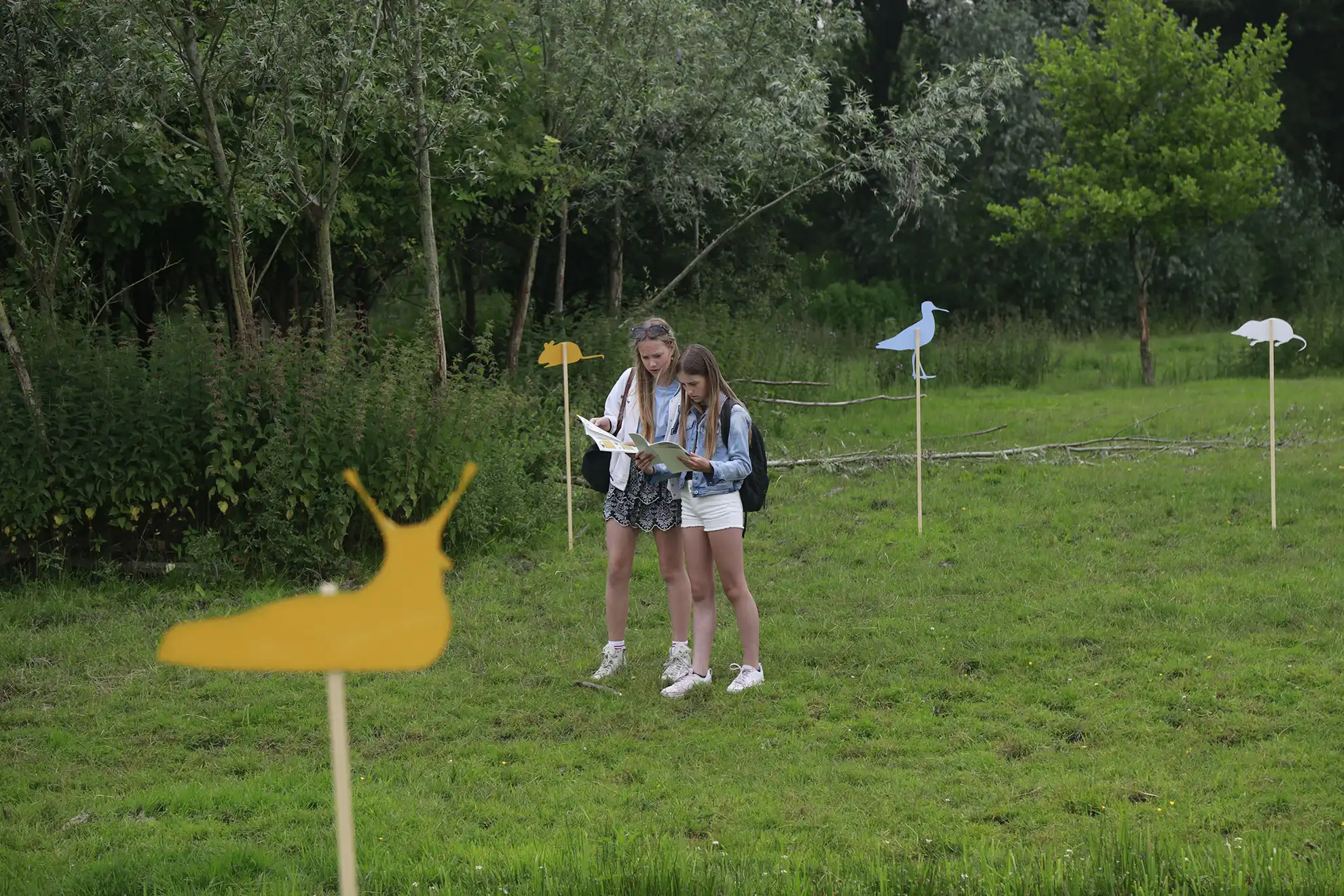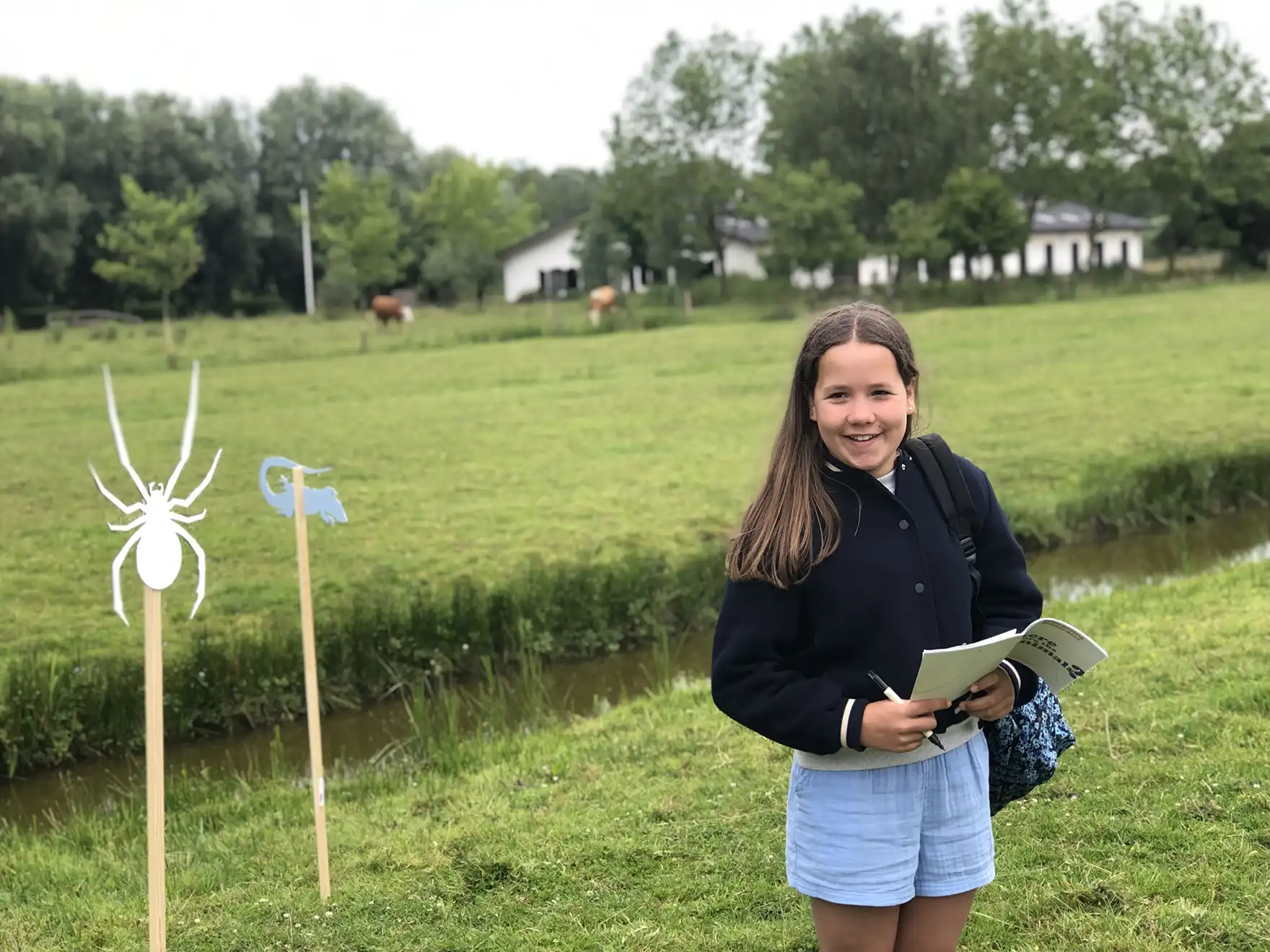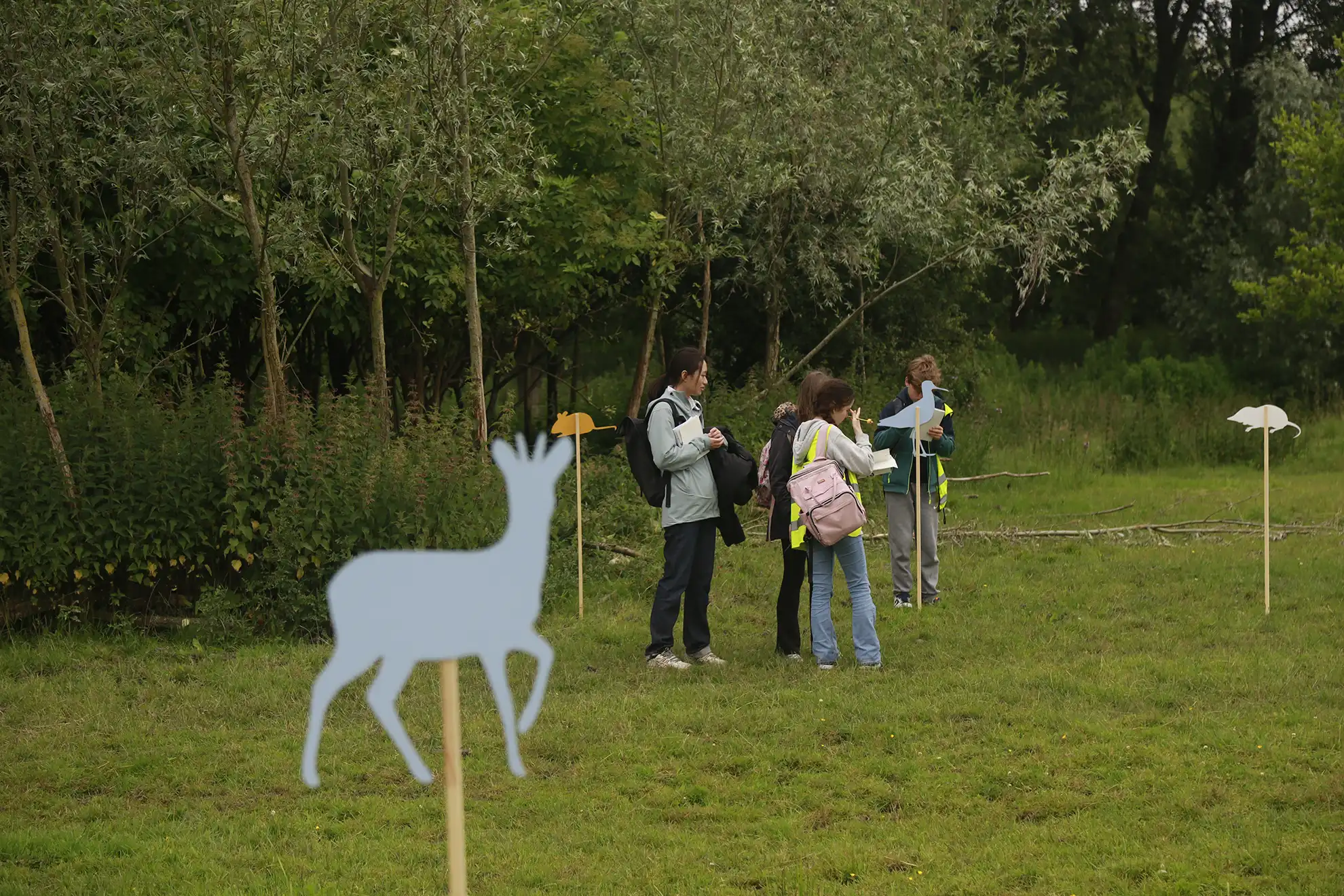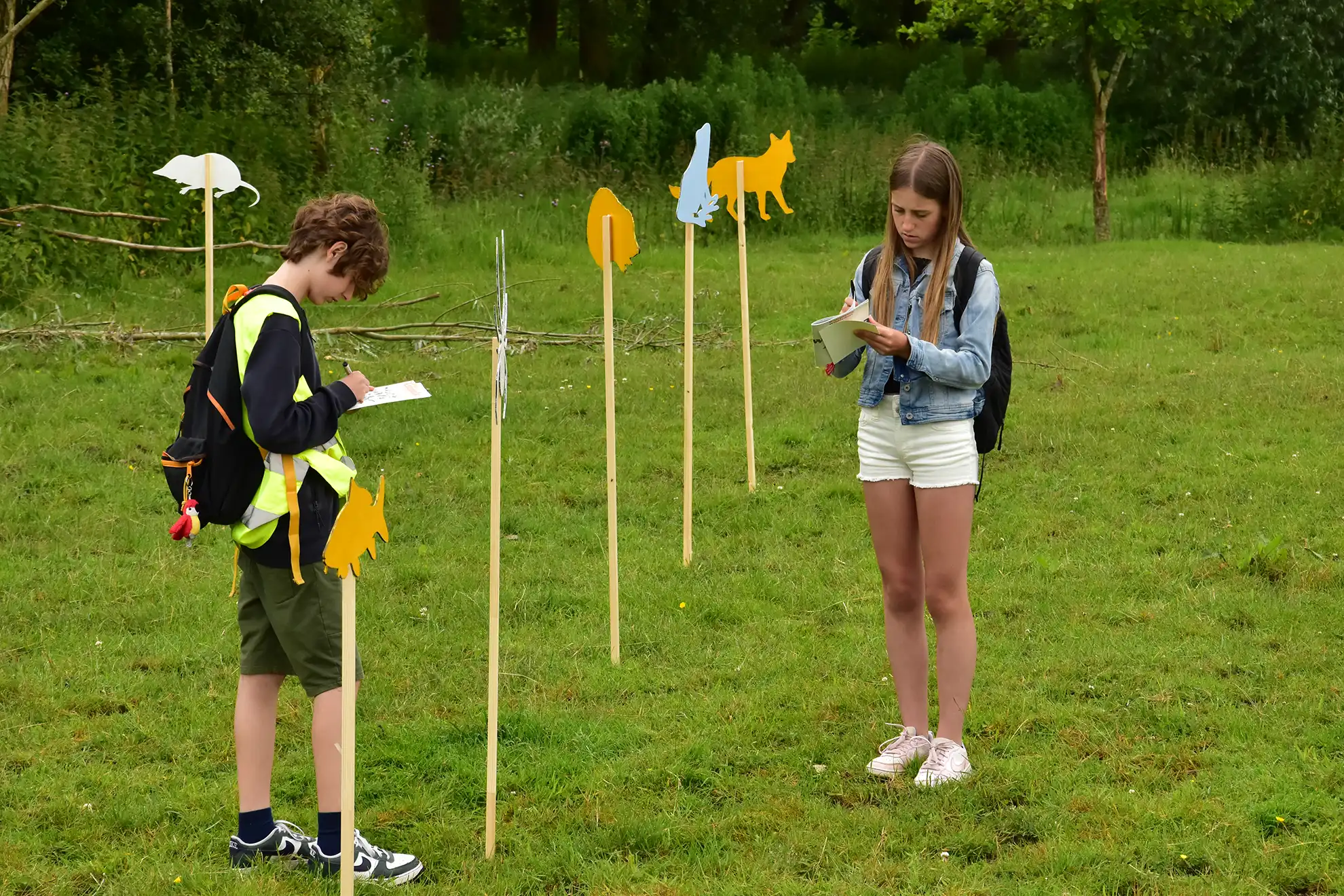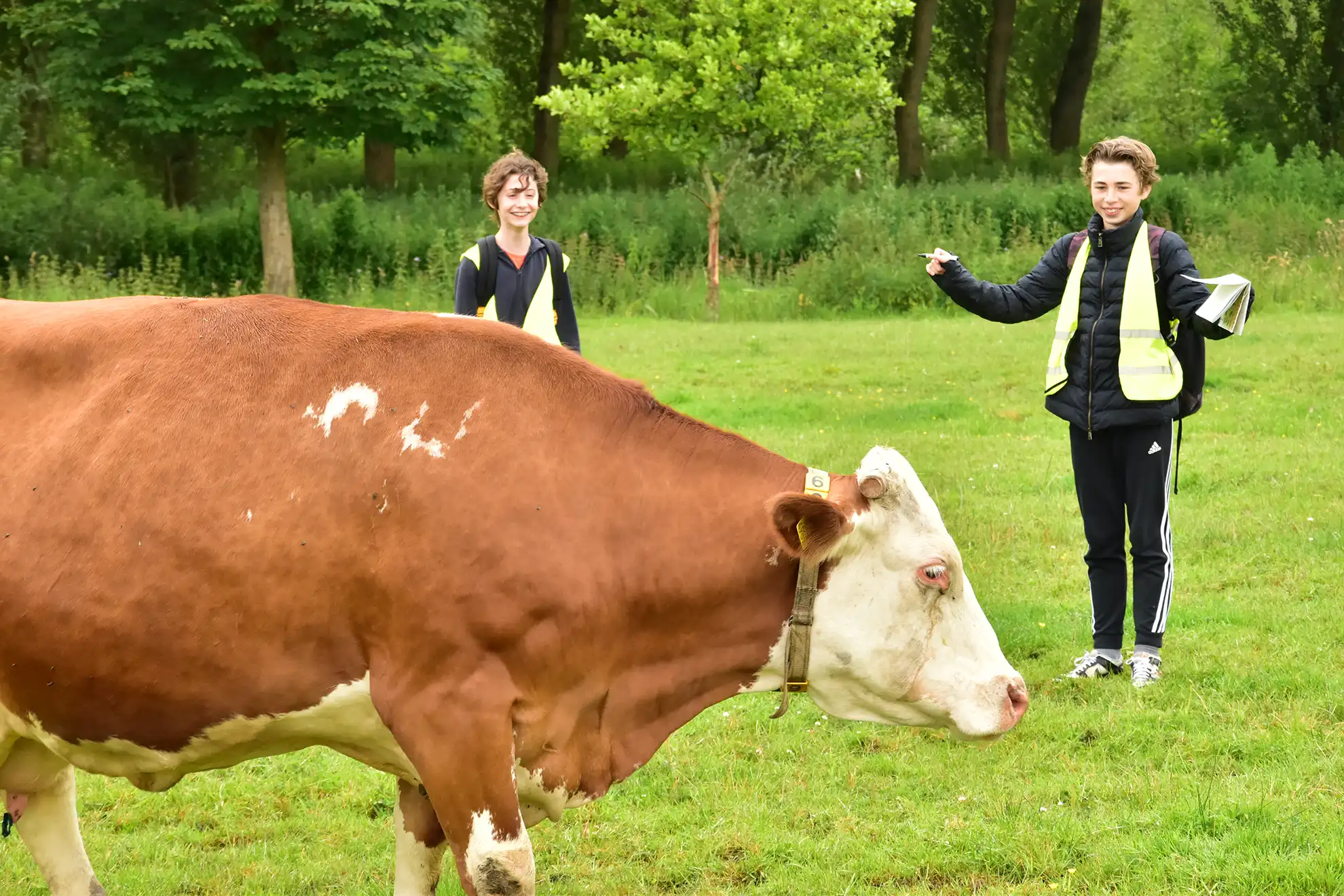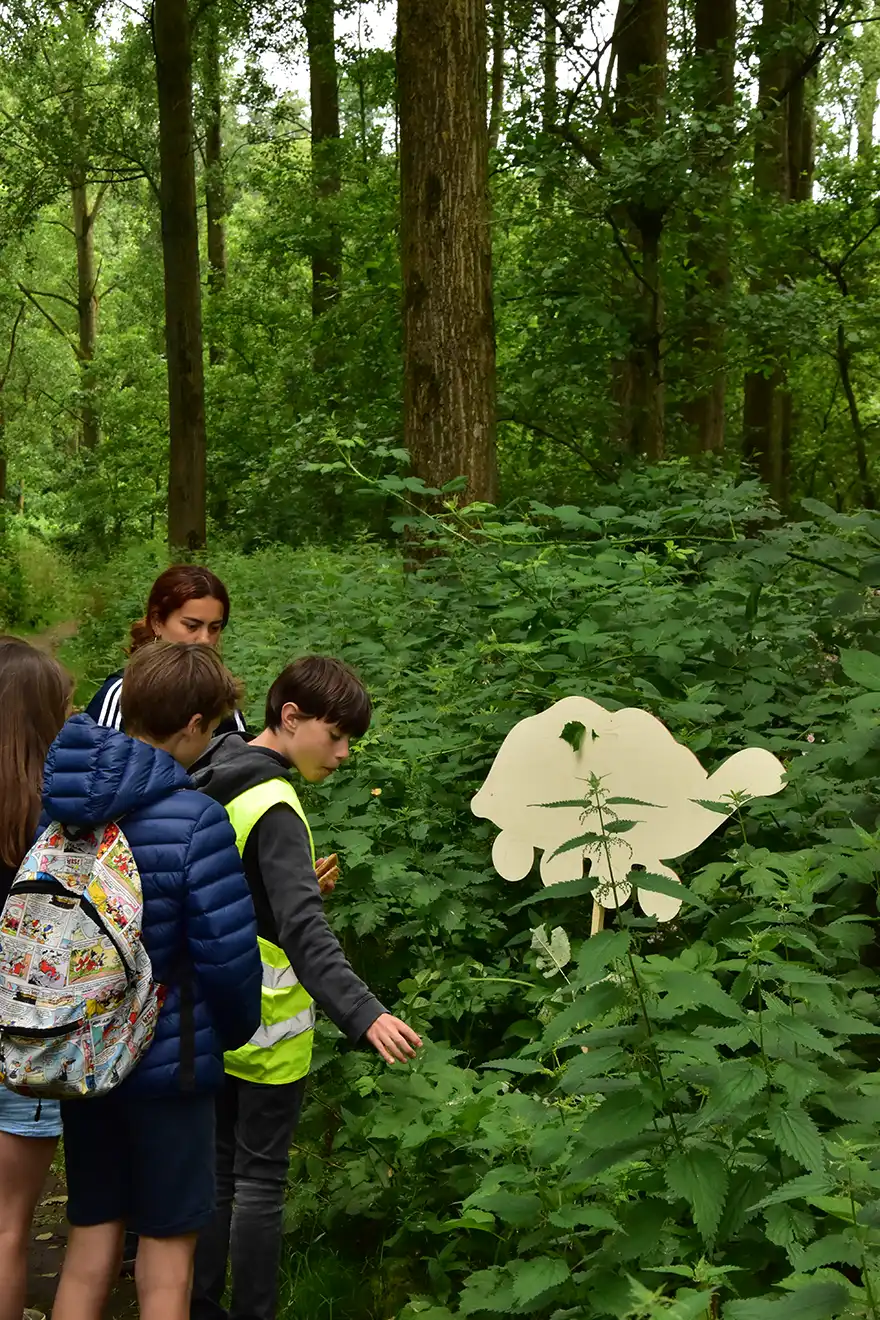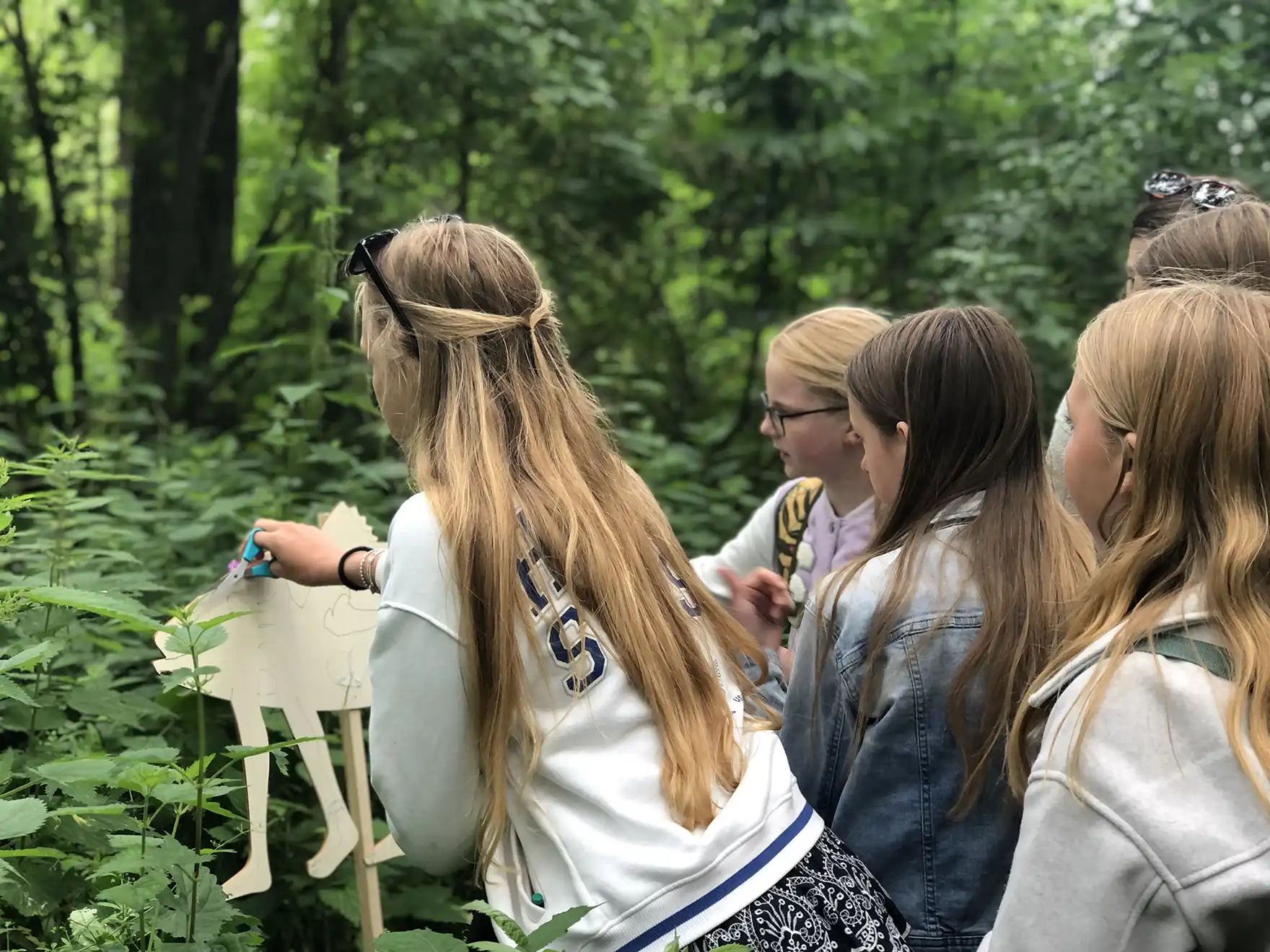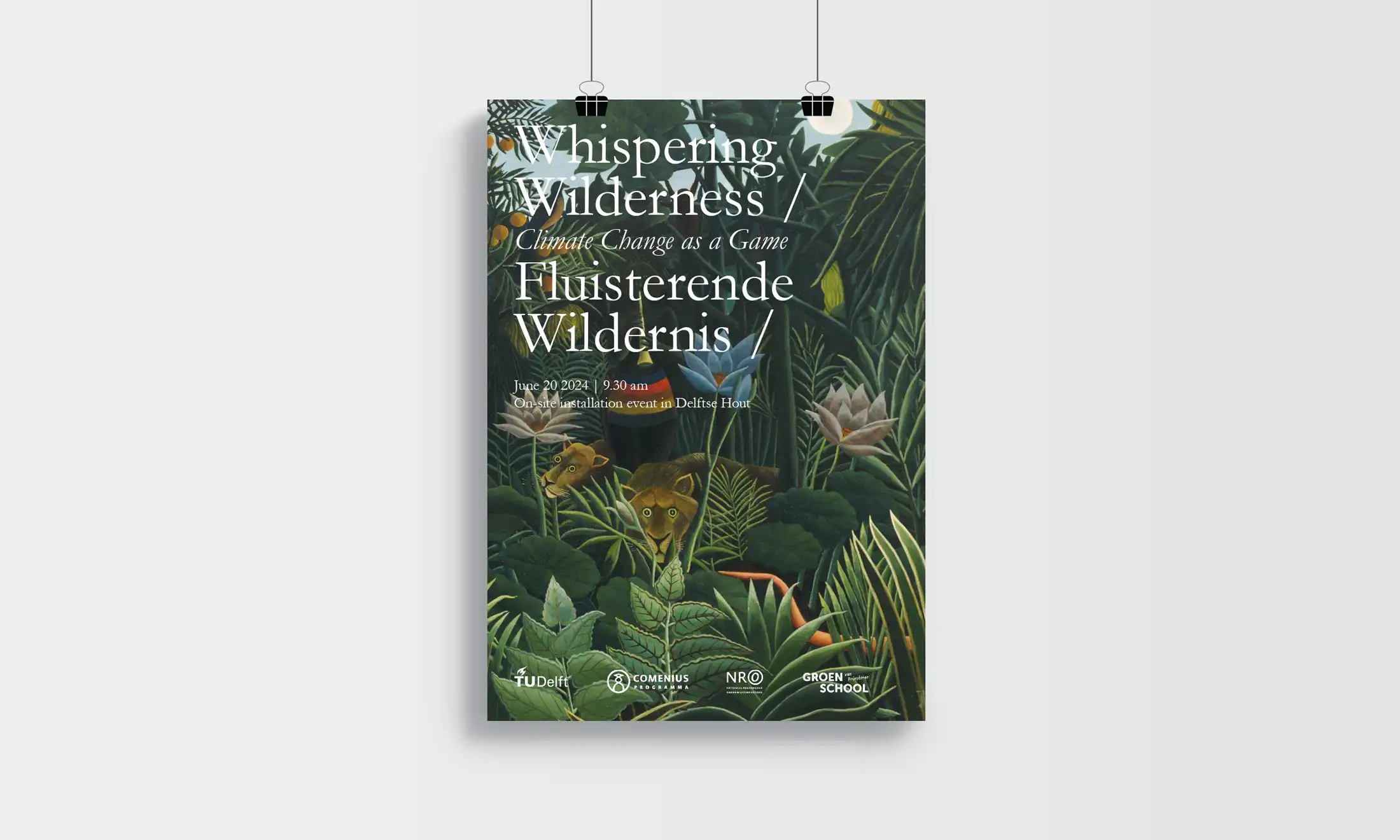
The Third Outdoor Workshop and Installation
Whispering Wilderness
During the Creating phase, students and teachers, inspired by the second workshop with children, developed several installation designs through collaborative co-design sessions. Ultimately, they collectively selected one final installation to prototype and construct for the concluding event.
This on-site installation day marks the end of the Comenius course ‘Climate Change as a Game’ for pedagogical innovation, which involved landscape architecture, architecture, and urbanism students from TU Delft along with a primary school class from the Groen van Prinstererschool.
This final event, ‘Whispering Wilderness,’ centered on interactions and playful co-designed practices involving children, teachers, parents, farmers, and (in)visible living animals and organisms to envision potential soil carbon futures for the climate transition. Wild play choreographies and installations—Between the Clouds, On the Earth, and Under Our Feet in the Polder—will guide you through The Dream in the Forest.
The educational event encouraged children to explore various animal species through installations divided into three habitat groups—air, land, and underground animals—displayed in the elementary forms of triangle, square, and circle. Animal species were painted in one of three colors—blue, white, and yellow—to indicate their presence in the region.
Equipped with detailed information about the animals and a bingo card, children embarked on a quest to match animal installations. This activity fostered not only fun and interactive learning but also educated them on the impact of climate change on animal habitats, enhancing their understanding of biodiversity and environmental challenges.
We compiled the information into a handy speed-dial booklet format, allowing the children to swiftly access information about animals from the past, present, and future.
This compilation resulted in the creation of the booklet titled ‘Where are the Animals?’ This informative booklet encompasses various content types: general information, educational texts on the animals supporting the installation, a bingo card, and blank pages for personal observations.
The general information provided insights into animal and human emissions. The animal data was categorized by timeframe, covering past, present, and future animals. The bingo card varied for each child, making it a unique game for all participants. The booklet interweaves a narrative connecting animals and climate change, offering a comprehensive educational experience.
In particular, the installation Under Our Feet allows children to imagine and learn about what lies beneath the ground and its potential for carbon storage. The (in)visible world beneath our feet is rich in biodiversity. Bacteria, fungi, protozoa, nematodes, arthropods, and earthworms represent various life forms within the soil. This biodiversity is essential for maintaining soil health, enhancing plant growth, and contributing to ecosystem services such as nutrient cycling, carbon sequestration, and water filtration—all vital factors severely threatened by climate change and human activity.
The installations in the polder guided children through The Dream in the forest. Unexpected evolutionary animals are showcased along the existing path in the nearby forest area. Inspired by Henri Rousseau’s vivid painting ‘The Dream,’ which portrays an imaginary jungle, our dream in the forest presented the animal evolution that children envisioned during the second workshop: the fish with legs for dry periods, the cow that self-stores CO2 emissions to mitigate climate impact, and the rabbit’s transformation into a butterfly to escape into the air and become a pollinator.
The workshop concluded with a playful dance to the tune of ‘In the Jungle.’ Participants mimicked animal movements, creating wild choreography. Play is a dance in the landscape.
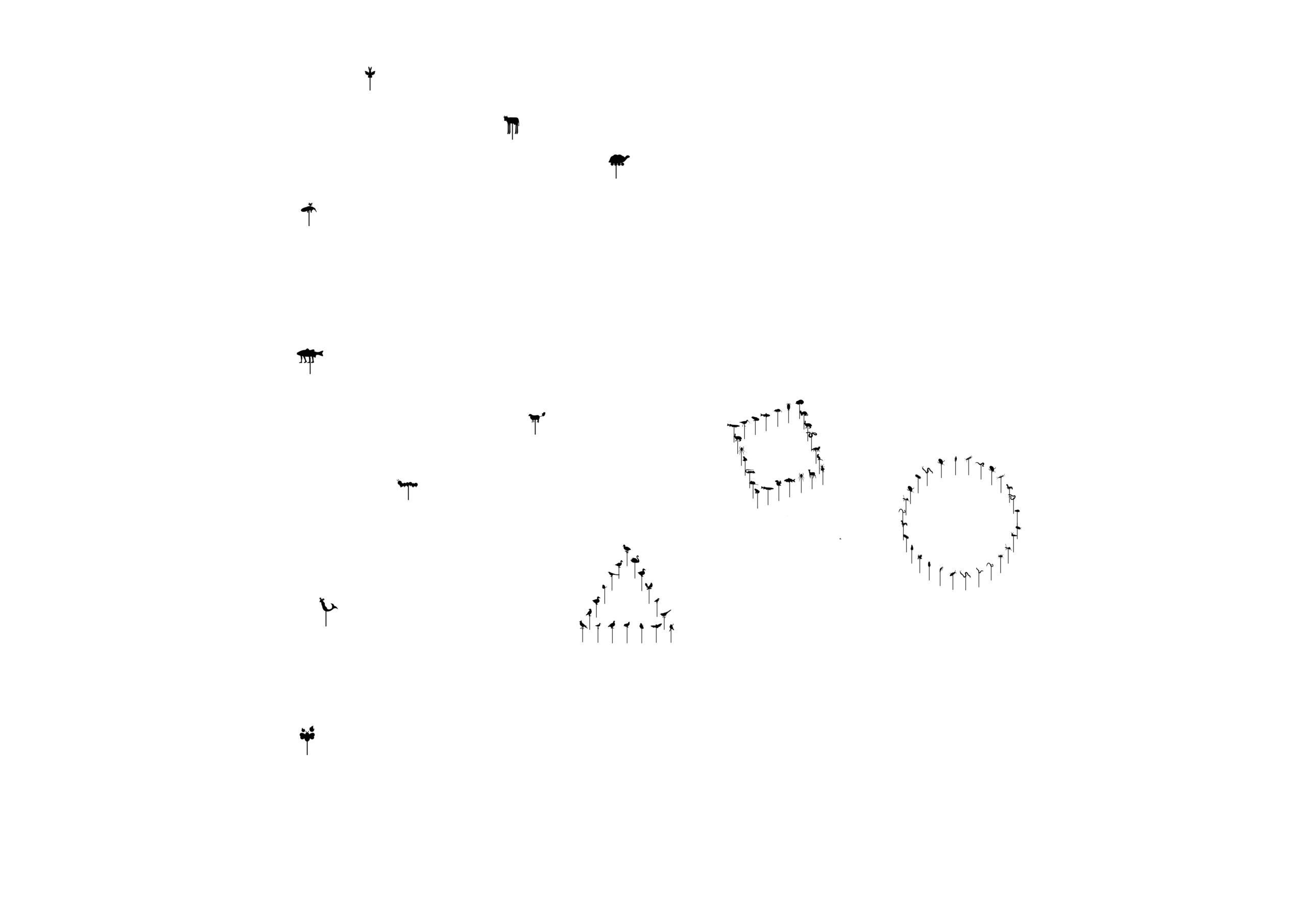
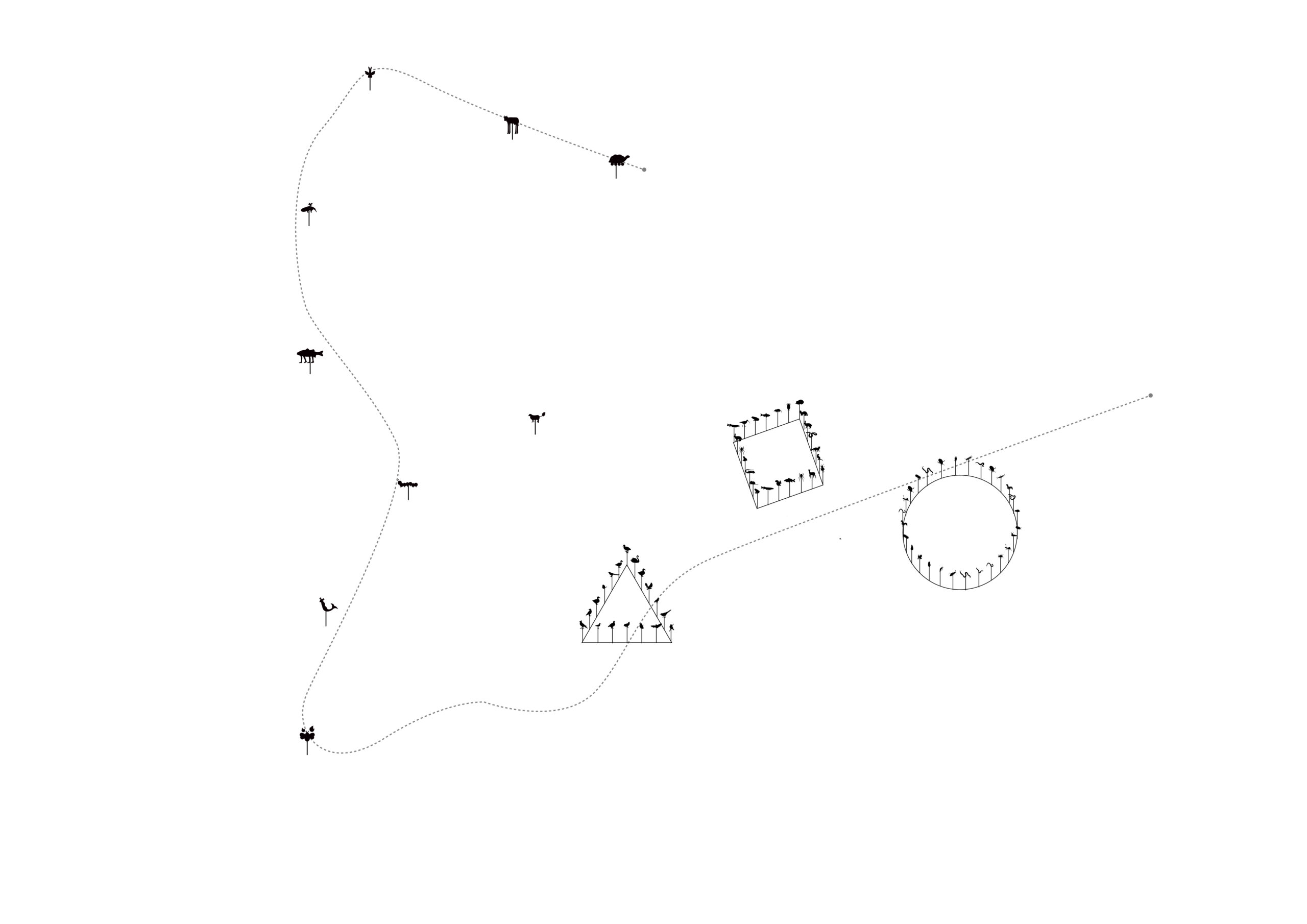
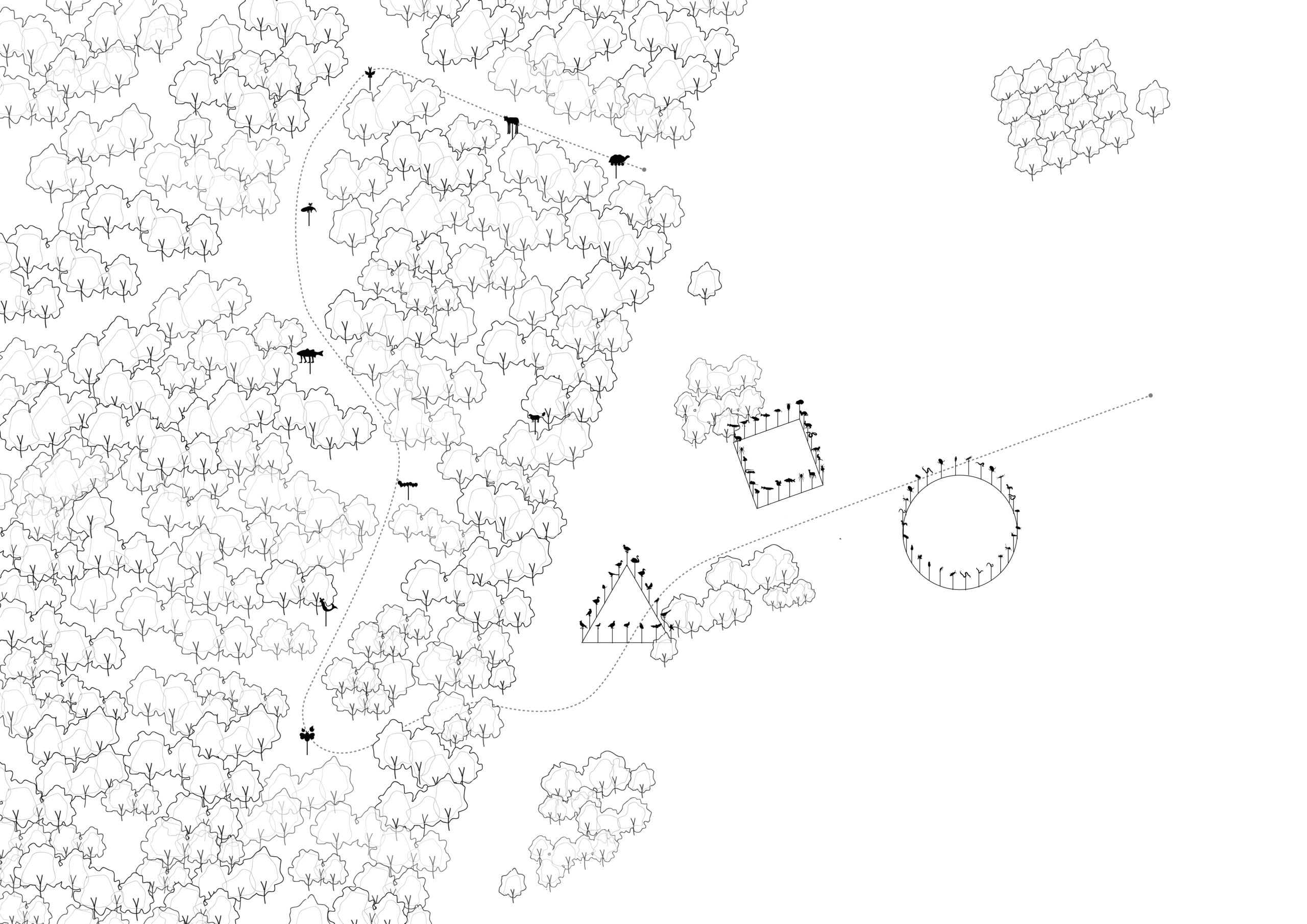
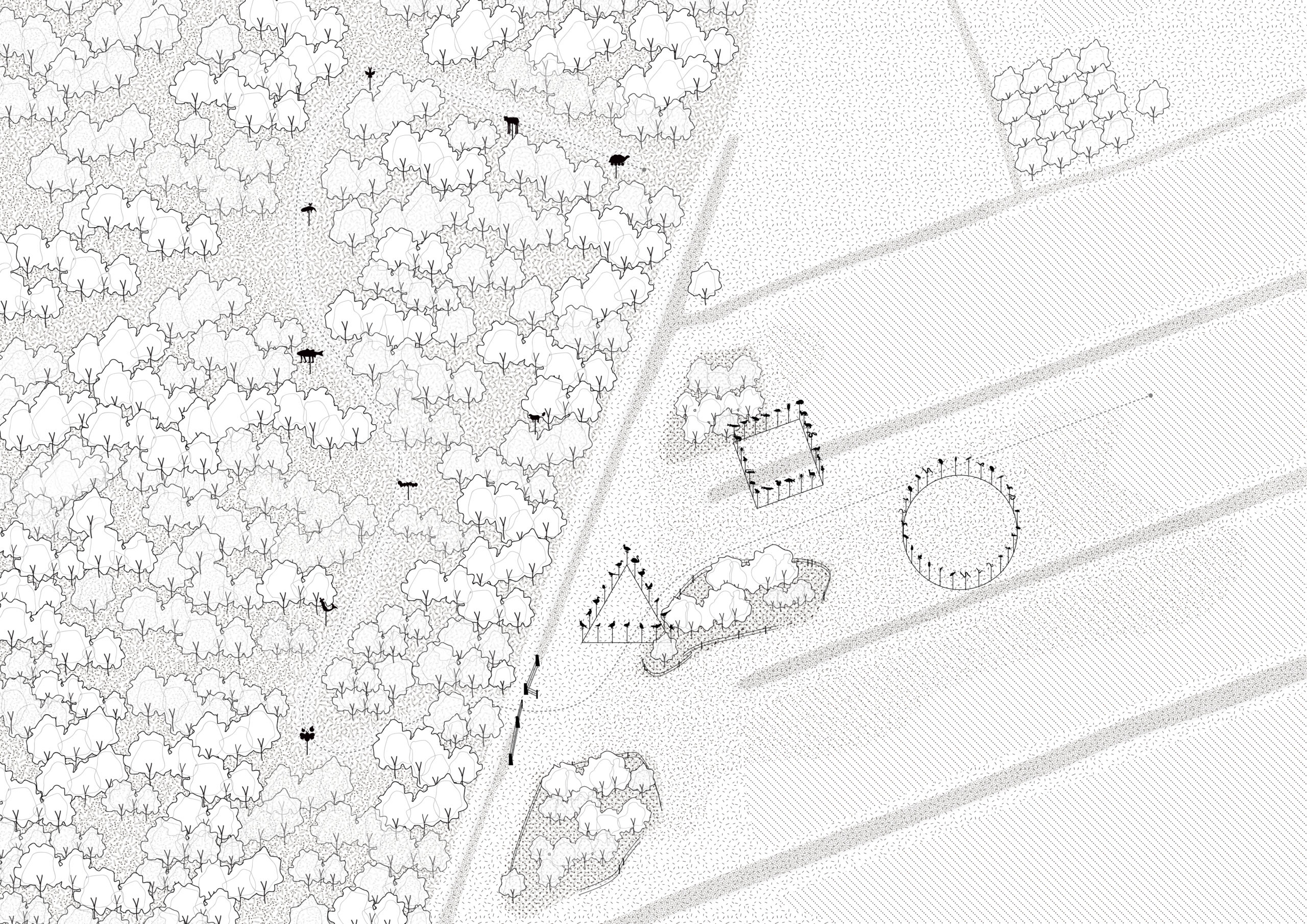
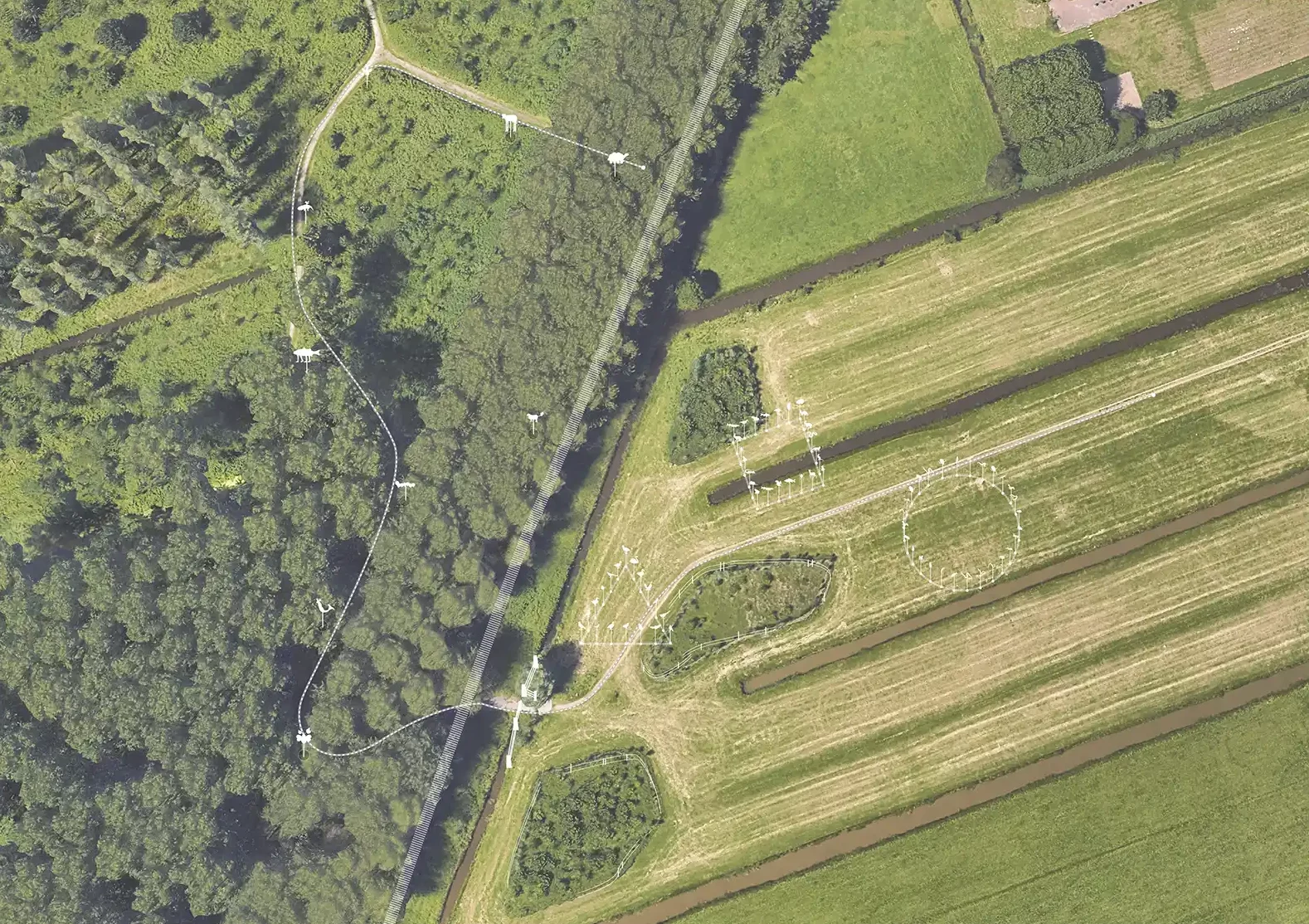
The educational event encouraged children to explore various animal species through installations divided into three habitat groups—animals of the air, land, and underground—displayed in the elementary forms of triangle, square, and circle.
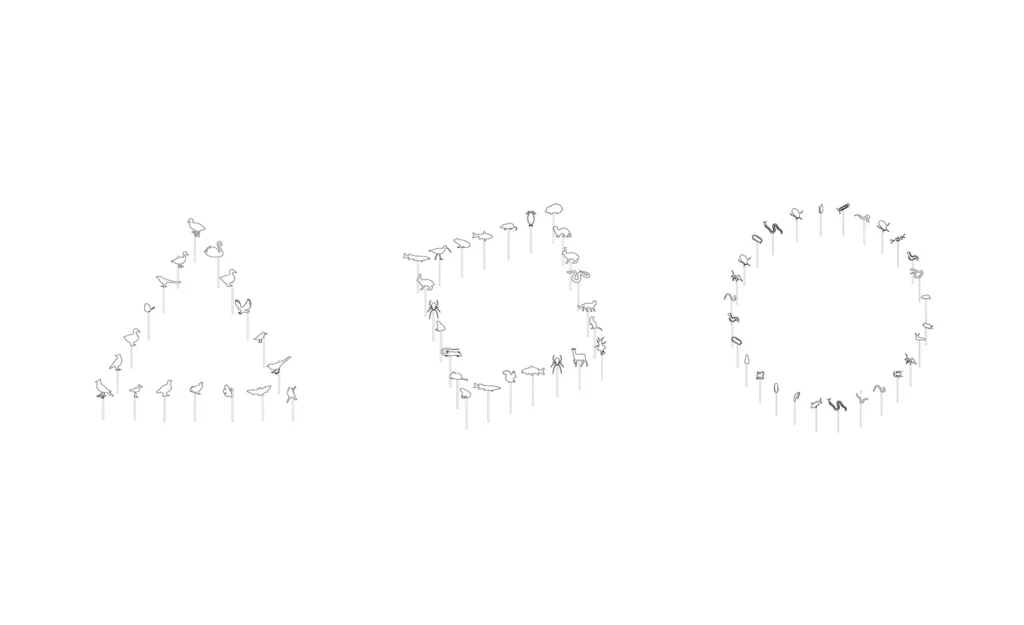
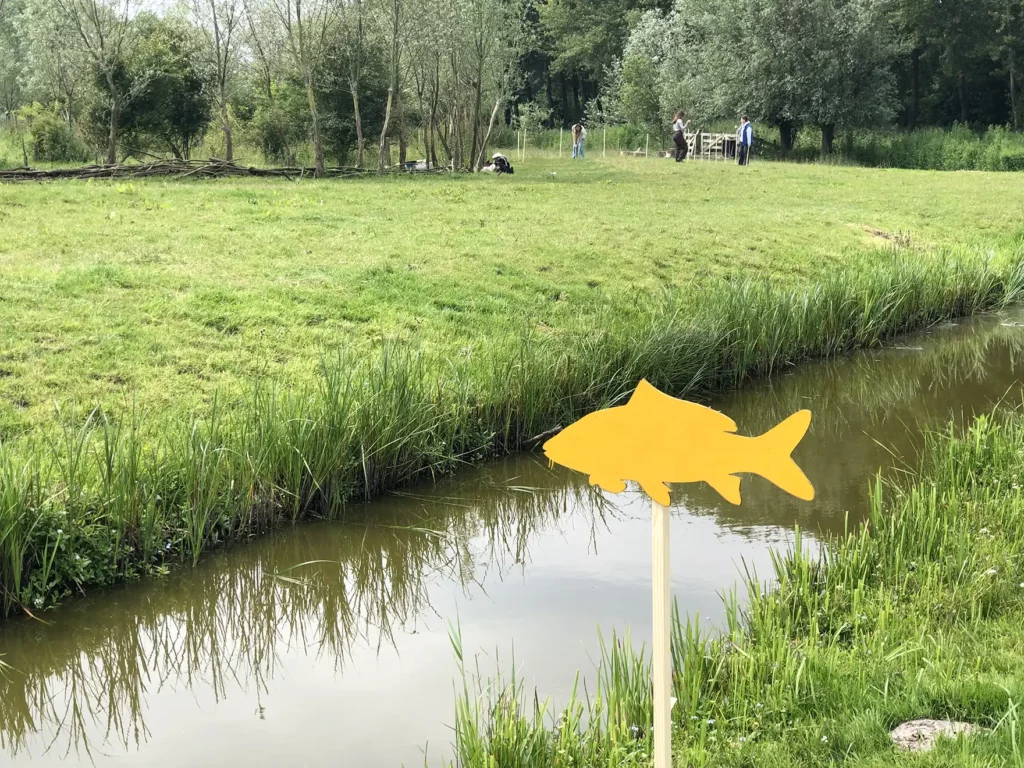
Equipped with detailed animal information and a bingo card, children embarked on a hunt for matching animal installations. This activity not only fostered fun and interactive learning but also educated them on the impact of climate change on animal habitats, enhancing their understanding of biodiversity and environmental challenges.
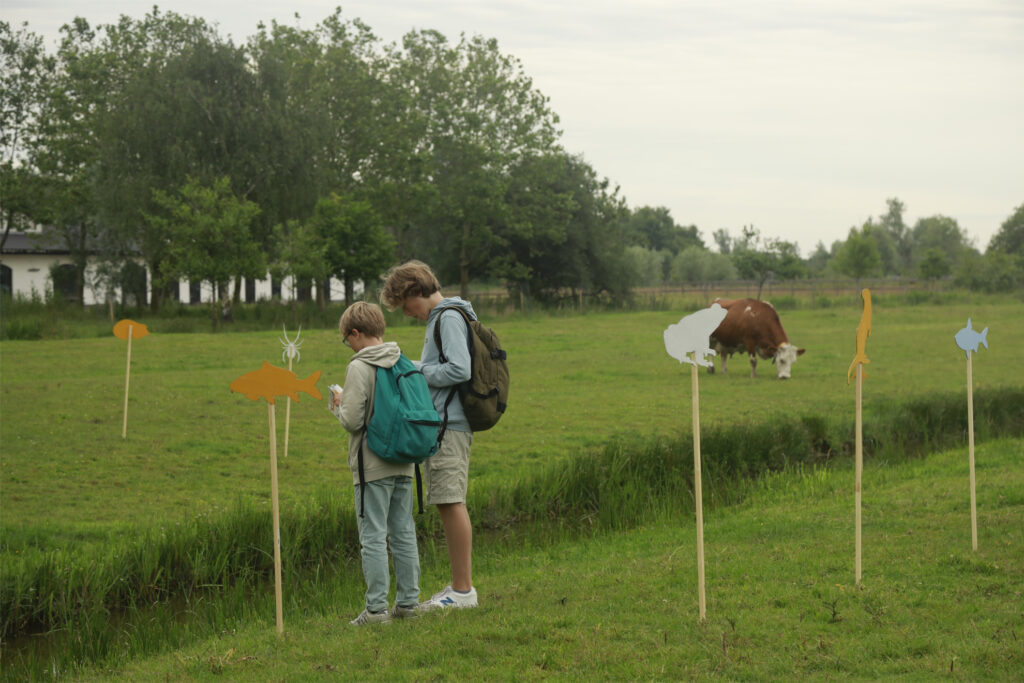
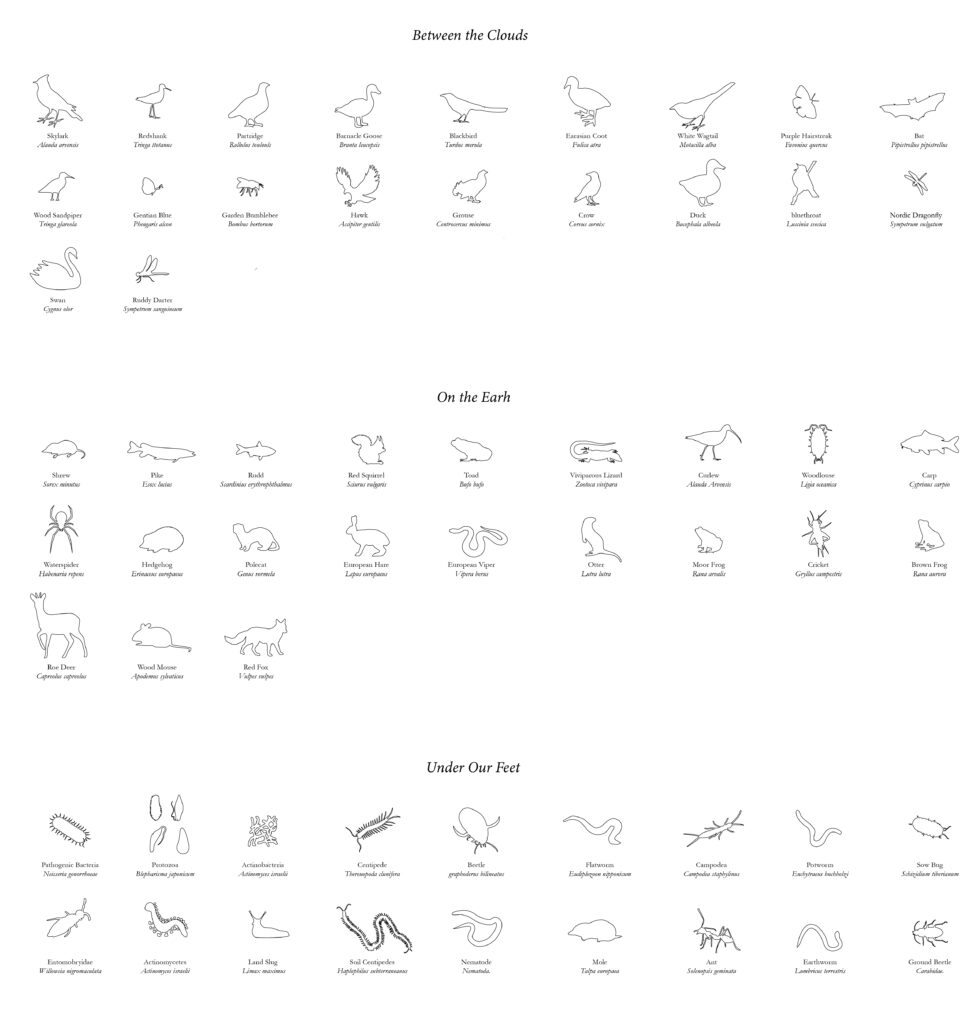

This informative booklet includes various types of content: general information, educational texts on the animals that support the installation, a bingo card, and blank pages for personal observations. The general information provided insights into animal and human emissions.
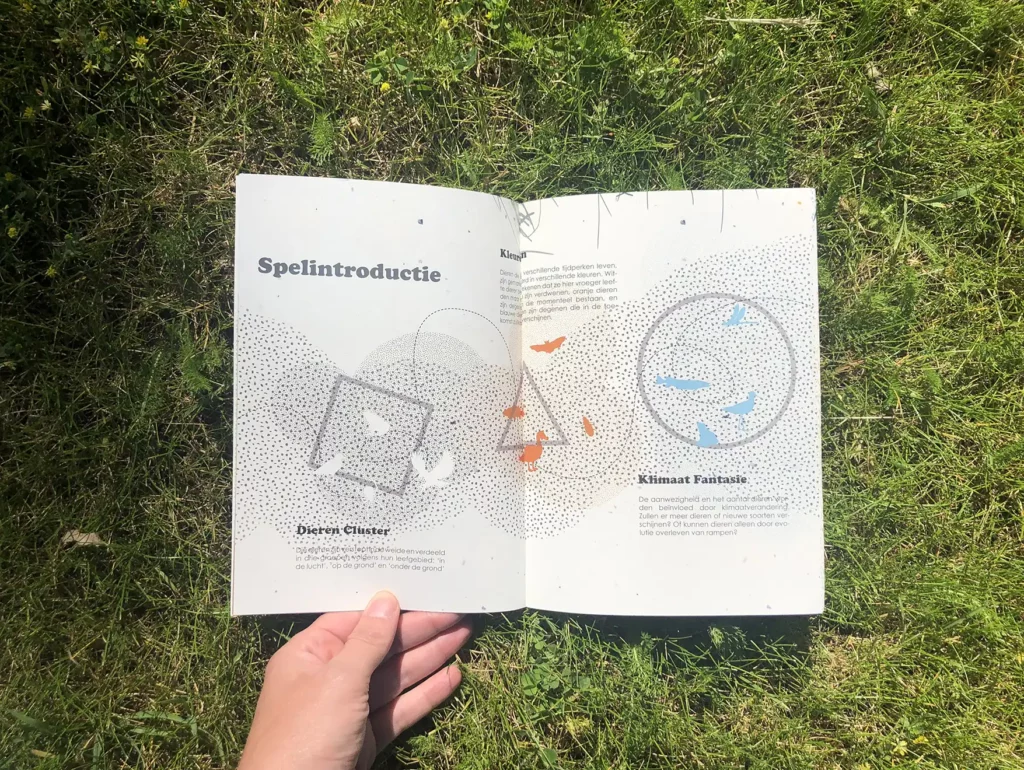
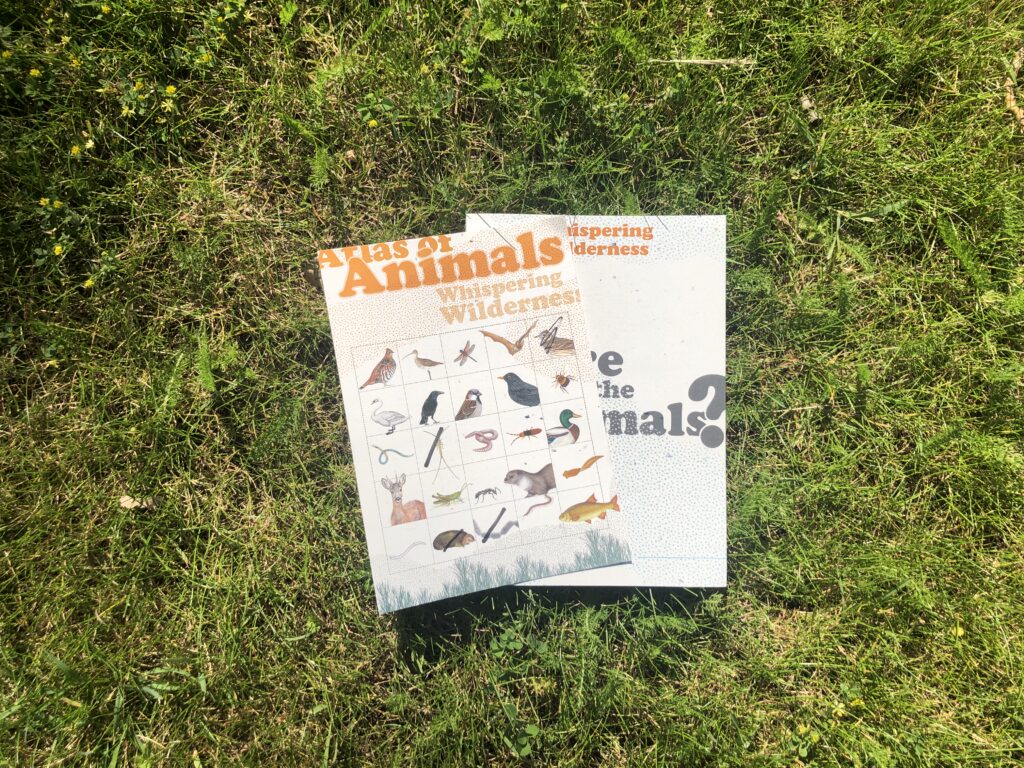
The installation 'Under Our Feet' allows children to imagine and learn about what lies beneath the ground and its potential for carbon storage. The (in)visible world beneath our feet is a realm of biodiversity. Bacteria, fungi, protozoa, nematodes, arthropods, and earthworms represent various life forms within the soil. This biodiversity is essential for maintaining soil health, enhancing plant growth, and contributing to ecosystem services such as nutrient cycling, carbon sequestration, and water filtration—all vital factors that climate change and human activity severely impact threat.
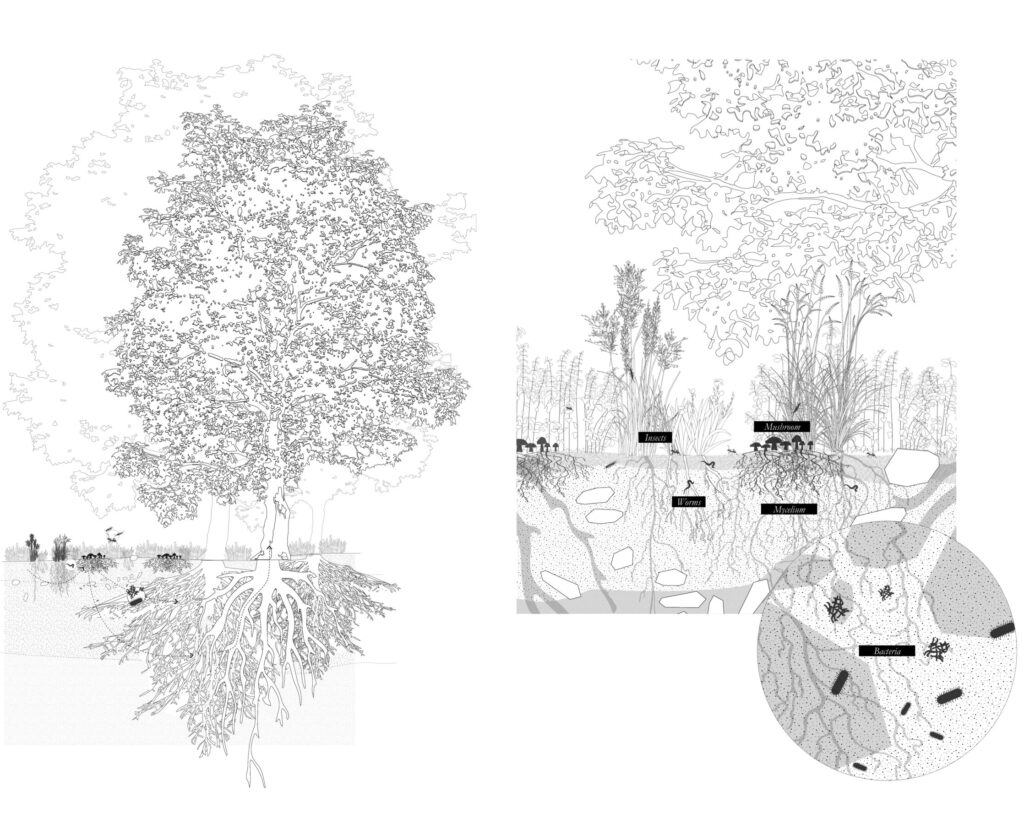
The installations in the polder guided children through 'The Dream' in the forest. Unexpected evolutionary animals are showcased along the existing path in the nearby forest area. Inspired by Henri Rousseau's vivid painting ‘The Dream,’ which depicts an imaginary jungle, our dream in the forest presented the animal evolution that children envisioned during the second workshop: the fish with legs for dry periods, the cow that self-stores CO2 emissions to mitigate climate impact, and the rabbit's transformation into a butterfly to escape into the air and become a pollinator.
The workshop concluded with a playful dance to the tune of ‘In the Jungle,’ where participants mimicked the movements of animals, creating wild choreography. Play is a dance in the landscape.
